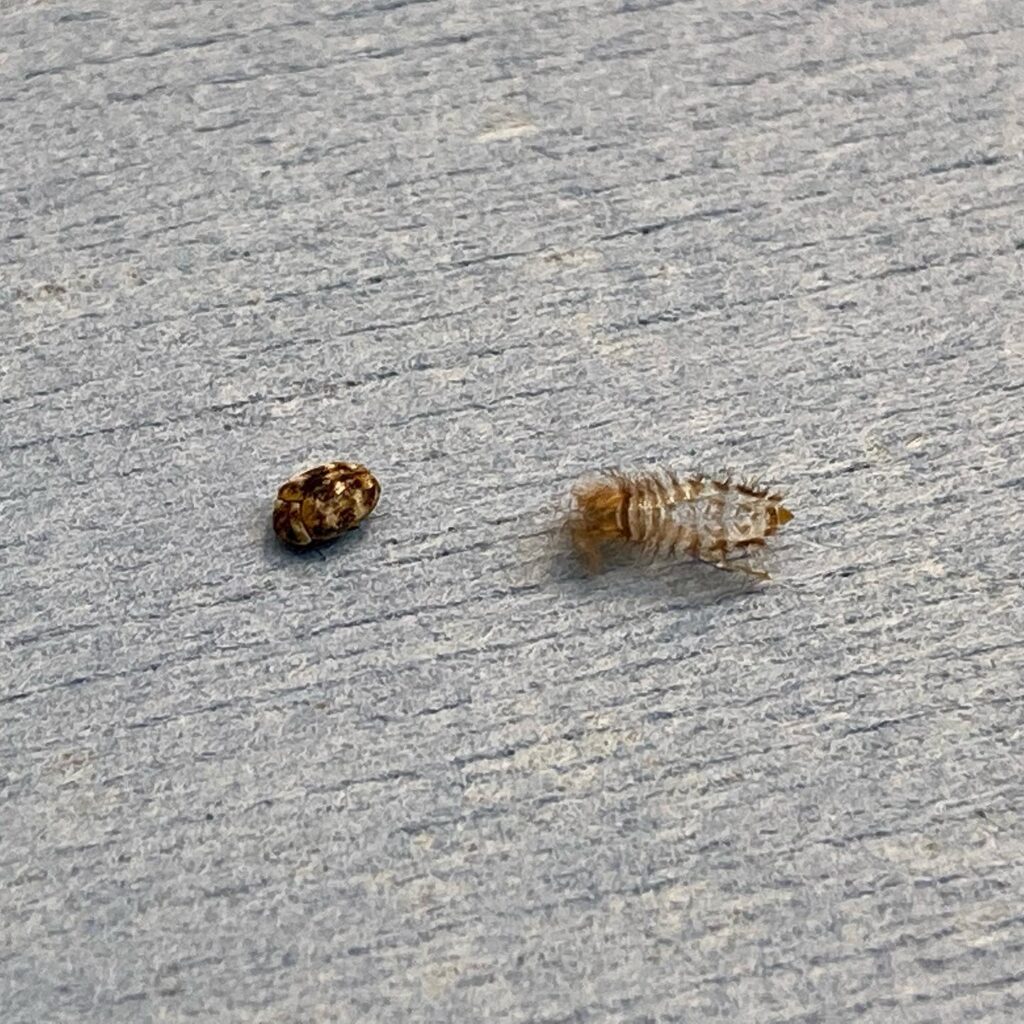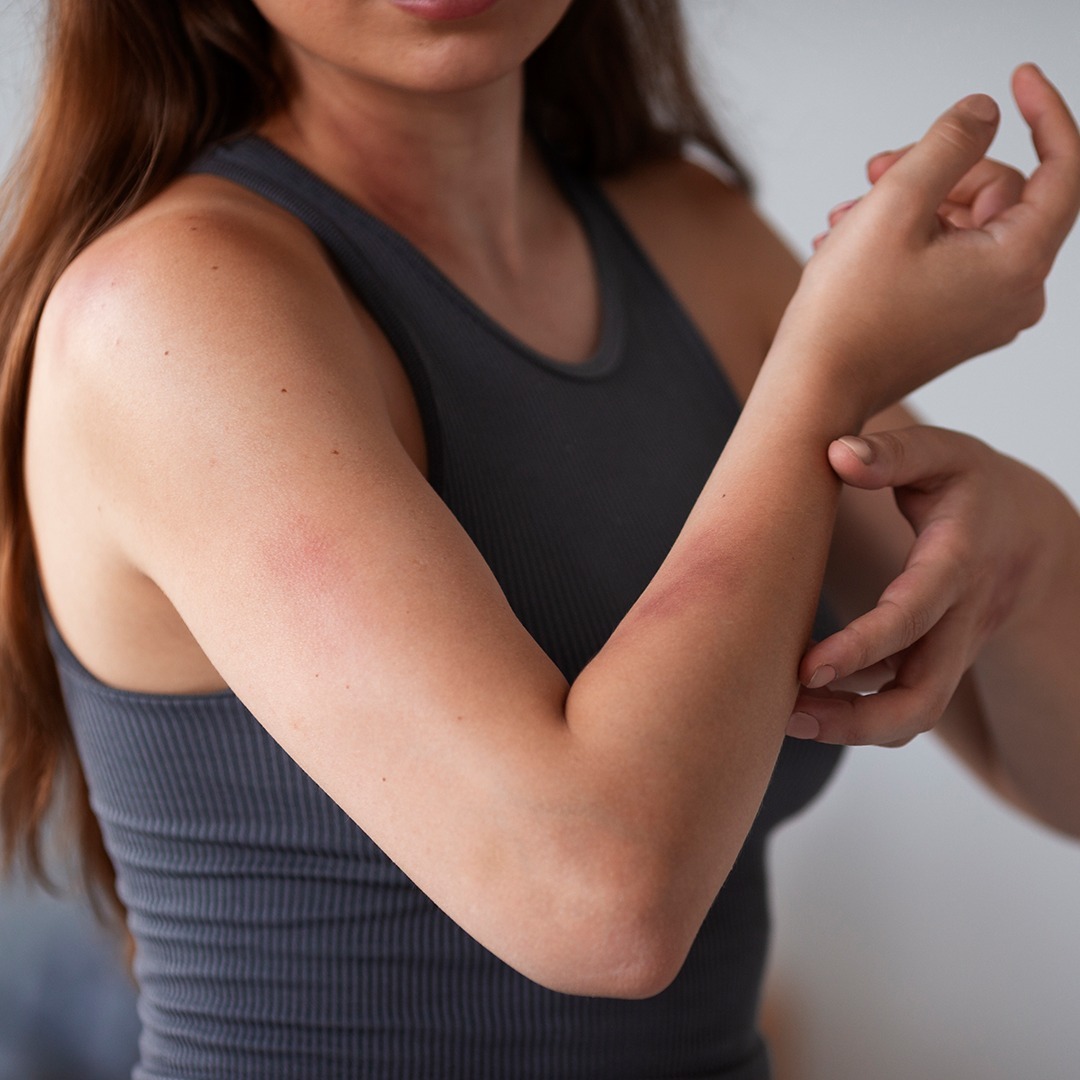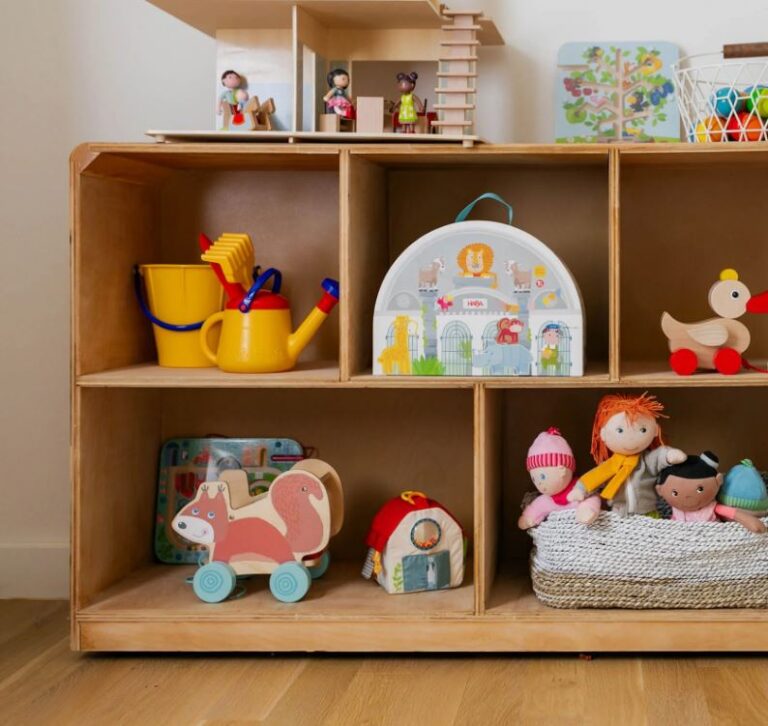Do Carpet Beetles Bite? A Pest Expert’s Guide to the Real Problem
If you’re finding tiny, itchy welts on your skin and have spotted small, mottled beetles near your windowsill, you’re likely asking one urgent question: Do carpet beetles bite?
The short and direct answer is no, carpet beetles do not bite humans or pets. They lack the physical mouthparts required to bite. However, the real story is more complex and often mistaken for biting. The true culprits behind your skin irritation are their microscopic larvae.
In this expert guide, we’ll demystify carpet beetle biology, explain the real cause of the “bites,” and provide a clear plan for identification, treatment, and prevention.
The Carpet Beetle Lifecycle: Understanding the Enemy
To understand why you’re getting “bites,” you need to know the enemy’s life cycle. Carpet beetles undergo a complete metamorphosis: egg, larva, pupa, and adult.
- Adults: The adult beetles are the ones you often see. They are small (1-4 mm), round, and can have a variety of patterns (checkered, spotted, or solid). They are attracted to light and are often found on window sills. Their primary goal is to mate and lay eggs.
- Larvae: This is the destructive and irritating stage. Carpet beetle larvae are small, hairy, and caterpillar-like. They avoid light and hide in dark, undisturbed areas where they feed.

Pest Pro Insight: “The vast majority of ‘carpet beetle bite’ cases I see are actually a severe allergic reaction to the barbed hairs, or setae, on the larvae. These tiny, spear-like hairs can break off, become airborne, and embed themselves in skin, causing a fierce, itchy rash that closely resembles bed bug or mosquito bites.”
— Anonymous Certified Entomologist
Carpet Beetle Larvae vs. Bed Bugs: A Side-by-Side Comparison
Because the rash from carpet beetle larvae is so similar to other pest bites, proper identification is crucial. Misdiagnosis can lead to ineffective and costly treatments.
Here is a quick comparison table to help you distinguish the source of your problem:
| Feature | Carpet Beetle Larvae | Bed Bugs |
|---|---|---|
| Biting Ability | Do NOT bite. Cause rash from barbed hairs. | DO bite. Feed on blood directly. |
| Appearance | Tiny (4-5mm), hairy, caterpillar-like, banded appearance. | Small, flat, oval, reddish-brown, apple-seed shaped. |
| Signs of Infestation | Shed larval skins, damage to natural fabrics, live adults on sills. | Live bugs, dark fecal spots (on mattresses/seams), blood smears. |
| Behavior | Avoid light, found in closets, drawers, under furniture. | Nocturnal, found near sleeping areas (mattress seams, bed frames). |
| Primary Irritant | Allergic reaction to barbed setae (hairs). | Anticoagulant in saliva injected during biting. |
What Do Carpet Beetle “Bites” Look and Feel Like?
The reaction to carpet beetle larvae hairs is a condition known as carpet beetle dermatitis. The symptoms can vary in severity based on an individual’s sensitivity.
- Appearance: The rash typically consists of small, red, itchy welts or bumps. They can sometimes appear as a random, scattered pattern or in lines if the larva crawled across the skin.
- Sensation: Intense itching is the most common symptom. The area may feel prickly or have a burning sensation, similar to a rash from fiberglass insulation.
- Location: Commonly appears on exposed areas like the neck, arms, chest, and back, as these are most likely to come into contact with airborne hairs from bedding or clothing.
How to Get Rid of Carpet Beetles and Their Larvae
Eradicating a carpet beetle infestation requires a two-pronged approach: thorough cleaning and targeted treatment. The goal is to eliminate the food source for the larvae.
Step 1: The Deep Clean
- Vacuum Relentlessly: Vacuum all carpets, rugs, edges, under furniture, and upholstery. Pay special attention to closets, storage areas, and air vents. Empty the vacuum canister or bag into a sealed plastic bag and dispose of it outside immediately.
- Launder Fabrics: Wash all clothing, bedding, curtains, and other washable fabrics in hot water and dry them on a high-heat setting. This will kill any eggs or larvae.
- Freeze Non-Washables: For delicate items that can’t be washed, seal them in a plastic bag and freeze them for at least 72 hours (a week is best).
Step 2: Eliminate the Source
- Identify and Discard: Inspect stored items like woolens, furs, silk, and even dried food products (e.g., cereal, pet food). Discard any heavily infested items.
- Seal Entry Points: Install fine-mesh screens on windows and doors to prevent adult beetles from flying inside.
- Use Insecticides (If Necessary): For severe infestations, insecticides labeled for carpet beetles can be used. Focus on cracks, crevices, and baseboards. Diatomaceous earth is a non-toxic, desiccant dust that can be effective in these areas. Always follow label instructions carefully.
How to Prevent a Future Carpet Beetle Infestation
Prevention is always easier than eradication. Implement these habits to keep carpet beetles out for good.
- Store Smart: Store off-season clothing in sealed, airtight plastic containers, not cardboard boxes.
- Regular Vacuuming: Maintain a regular vacuuming schedule, especially in low-traffic areas.
- Inspect Flowers: Adult carpet beetles feed on pollen. Before bringing cut flowers inside, give them a gentle shake to dislodge any hitchhiking beetles.
- Use Cedar or Mothballs: While not a complete solution, cedar chests or blocks can act as a mild repellent.
Conclusion: Knowledge is Your Best Defense
So, do carpet beetles bite? No. But their larvae pose a significant nuisance through their irritating hairs, which cause a rash easily mistaken for bites. By correctly identifying the pest, understanding its lifecycle, and taking decisive action through cleaning and source elimination, you can effectively control and prevent carpet beetle problems. If the infestation persists or is widespread, do not hesitate to contact a licensed pest control professional who can provide a targeted and guaranteed solution.







